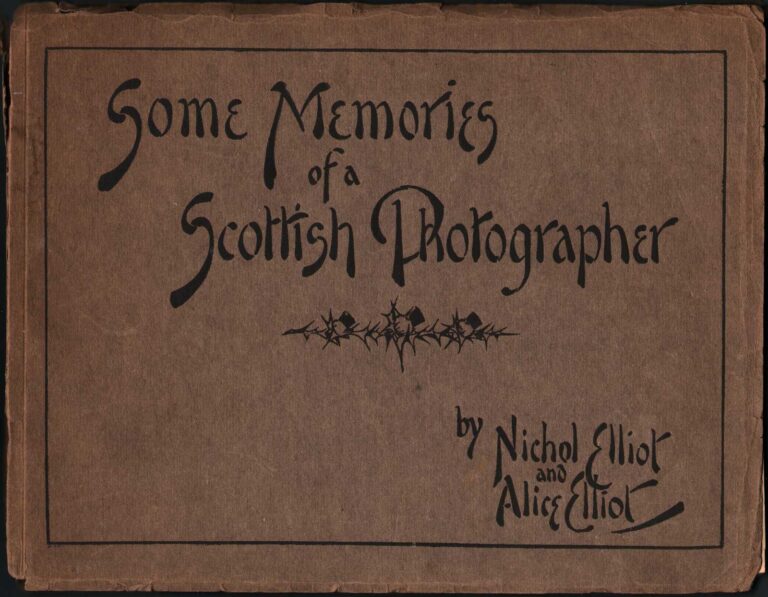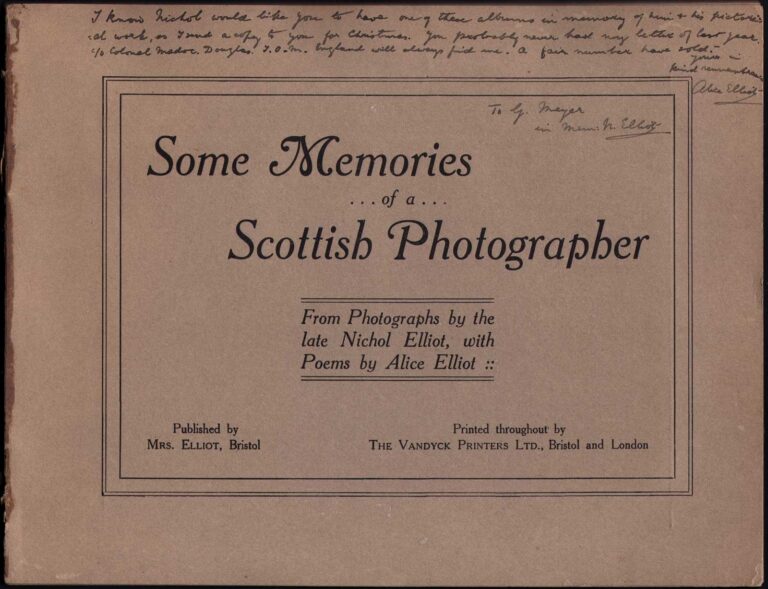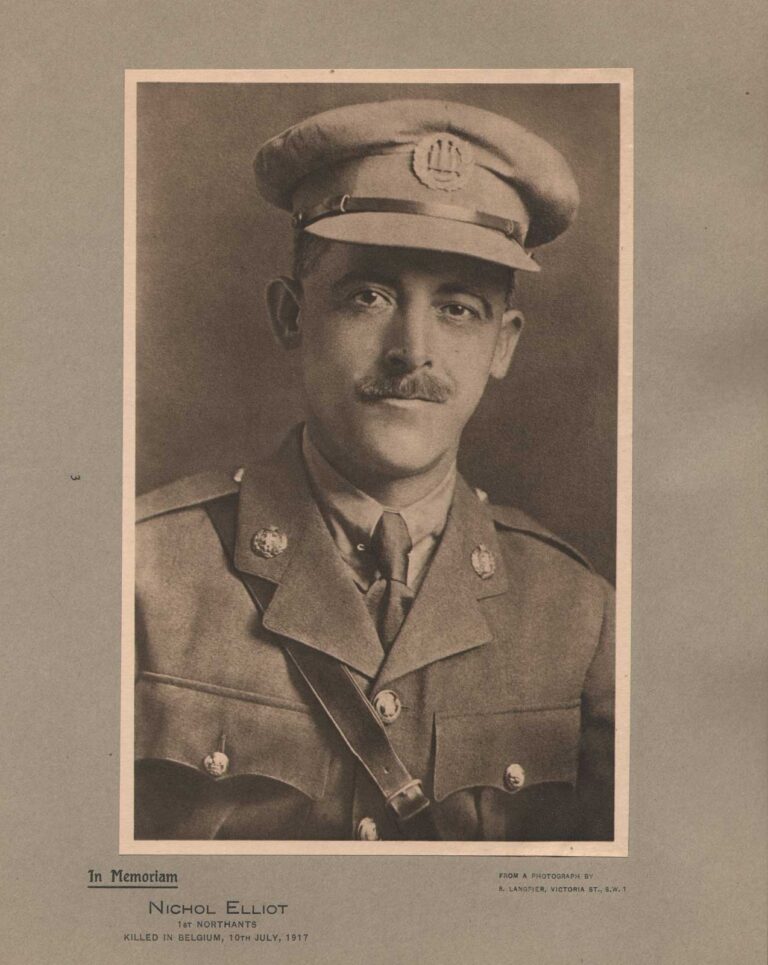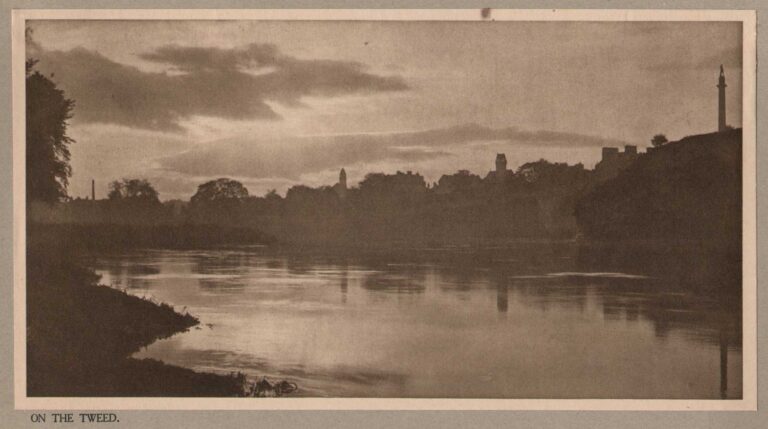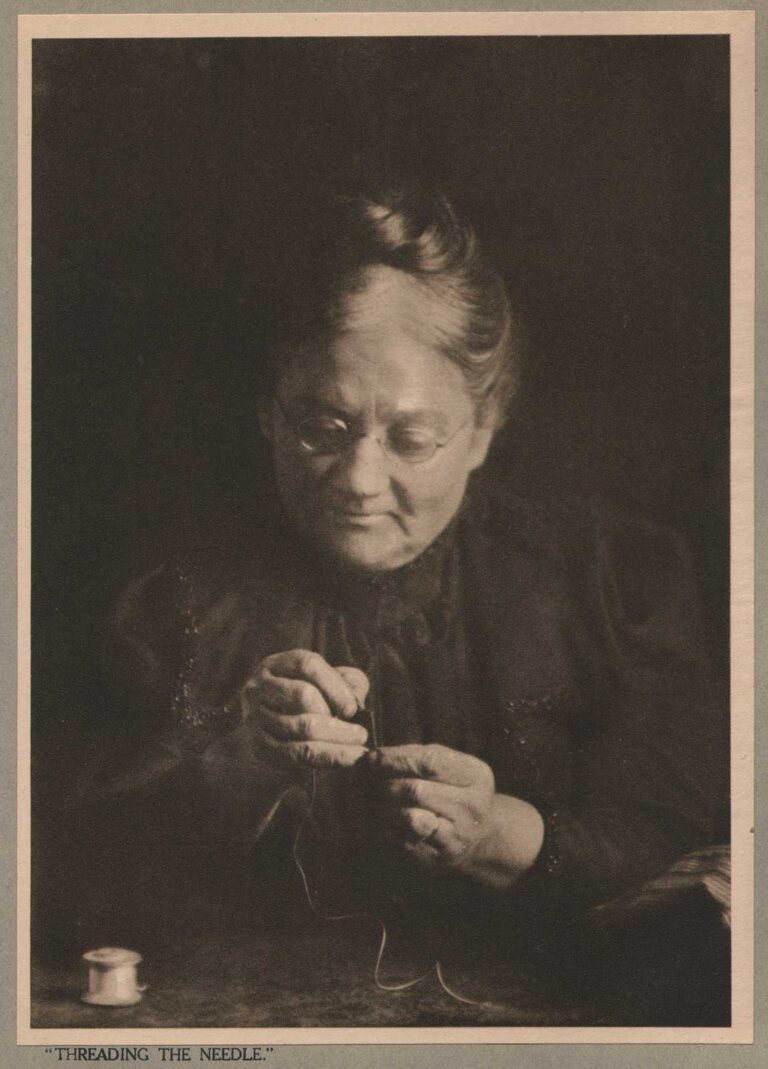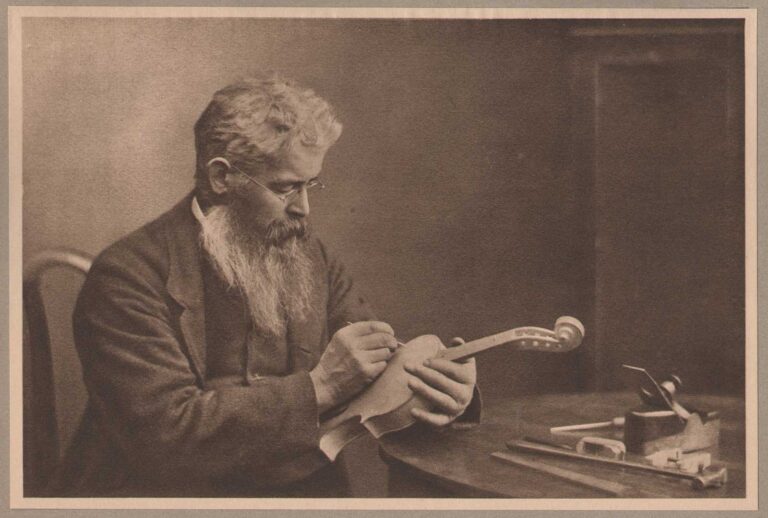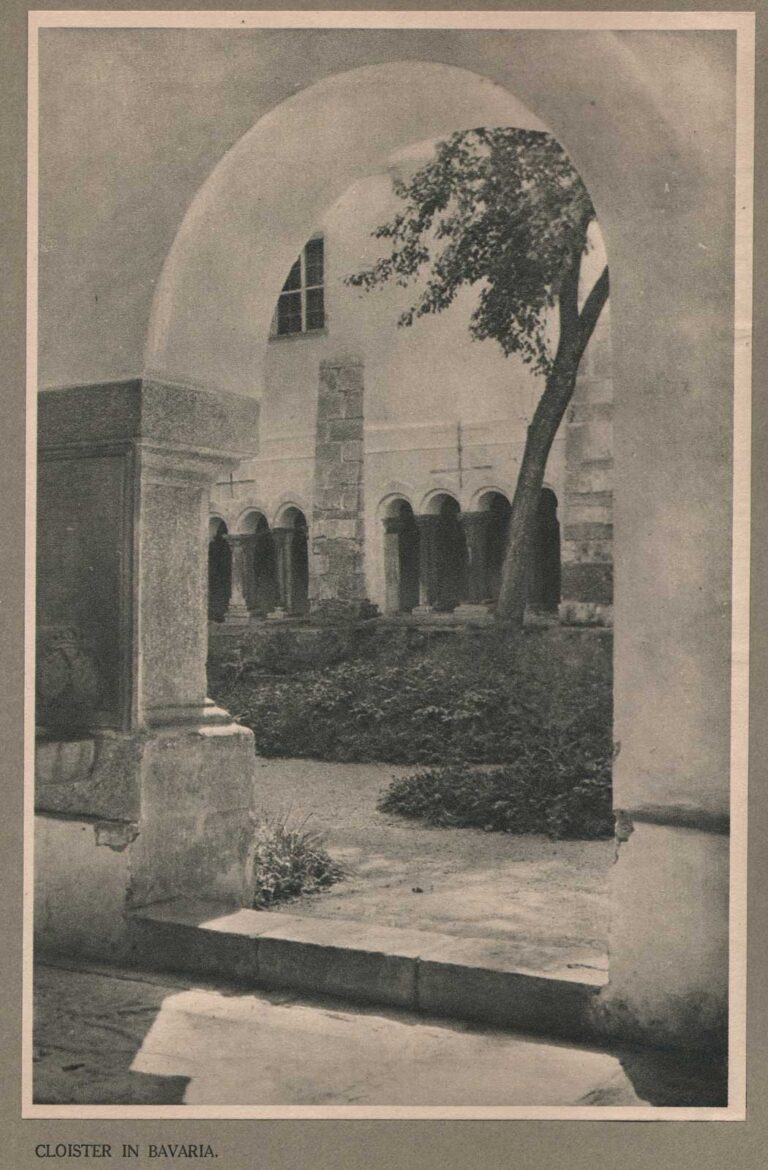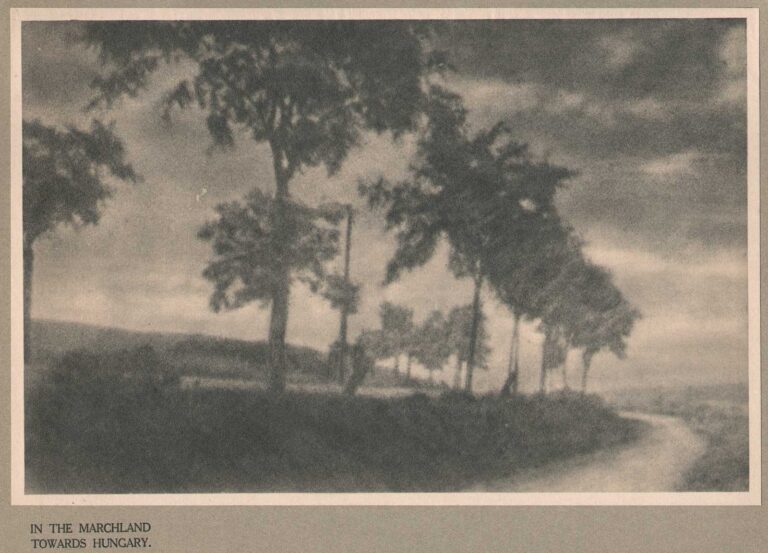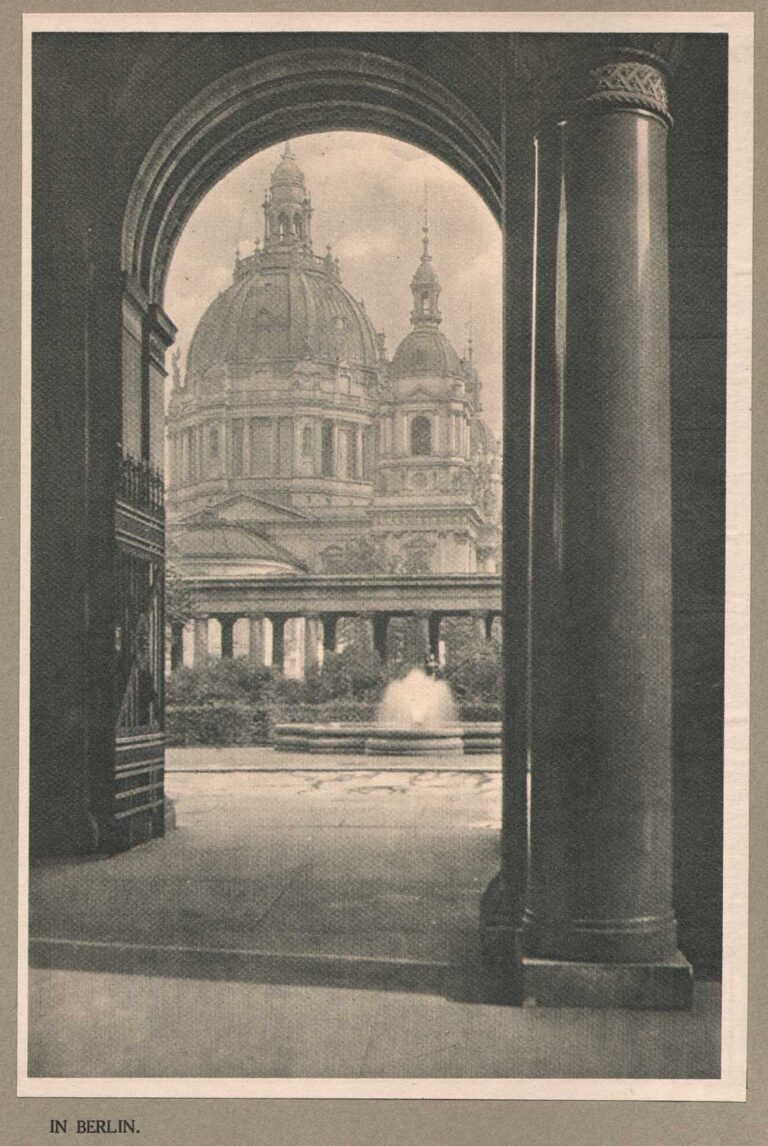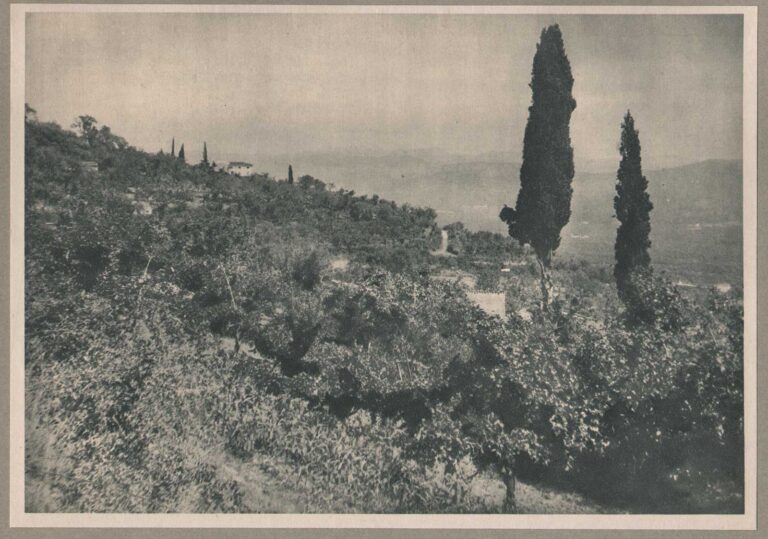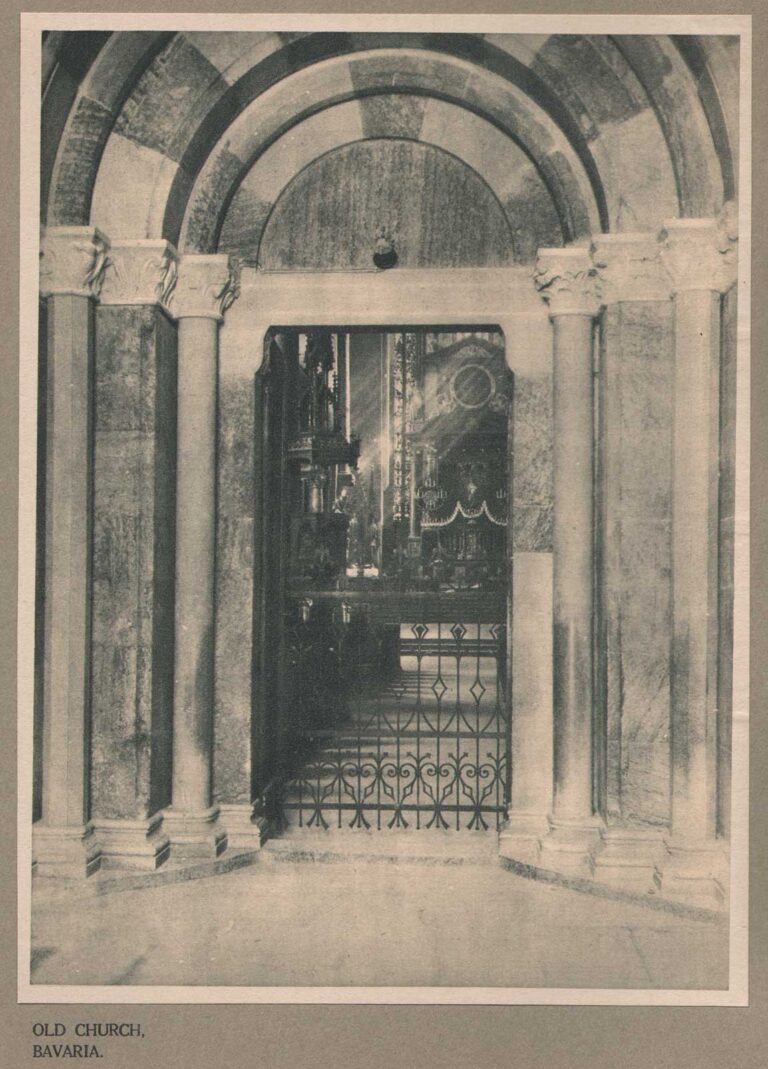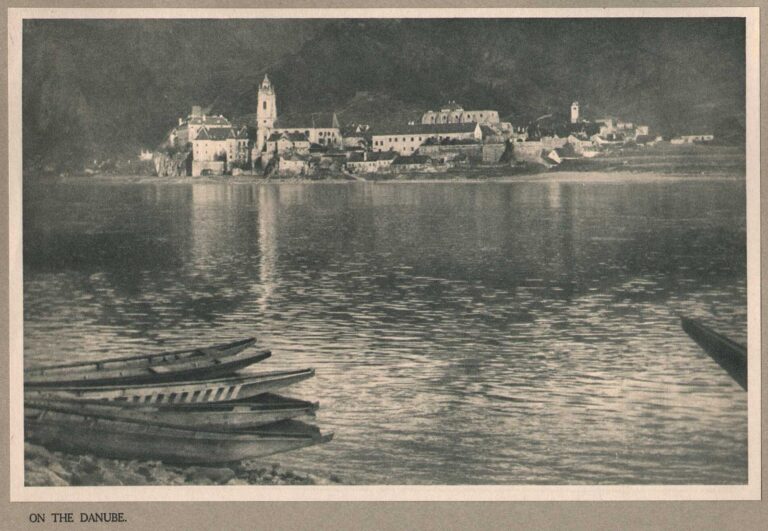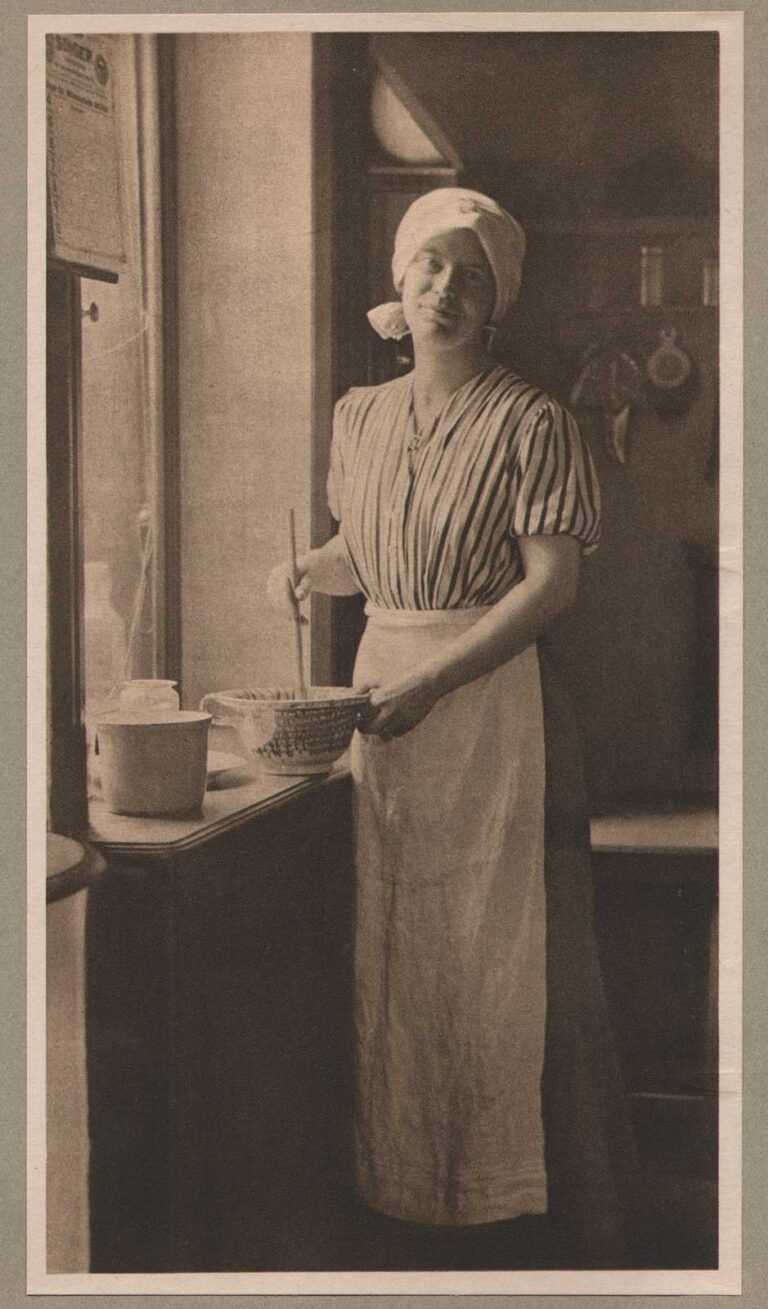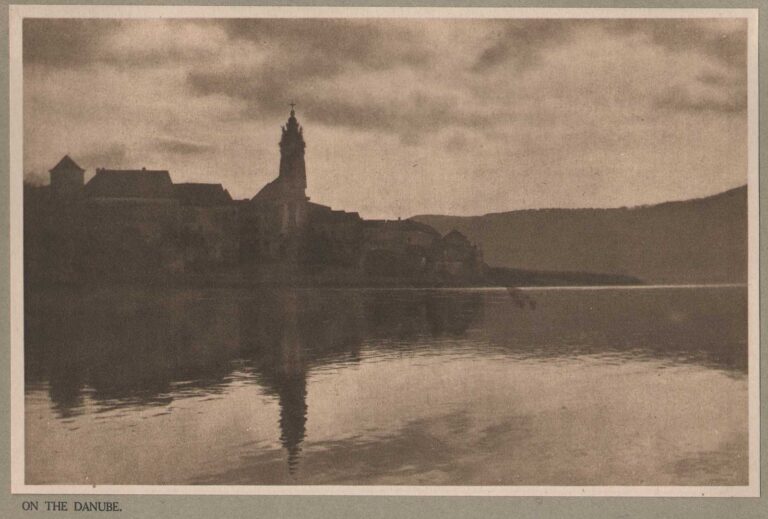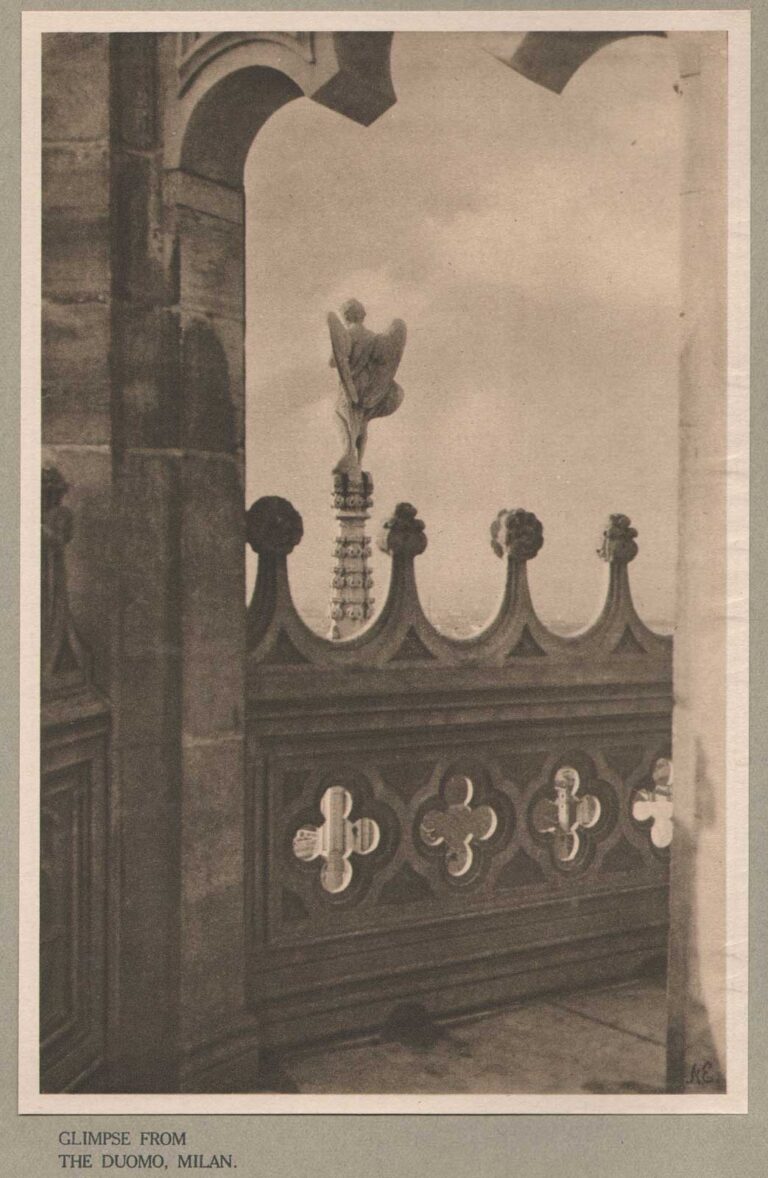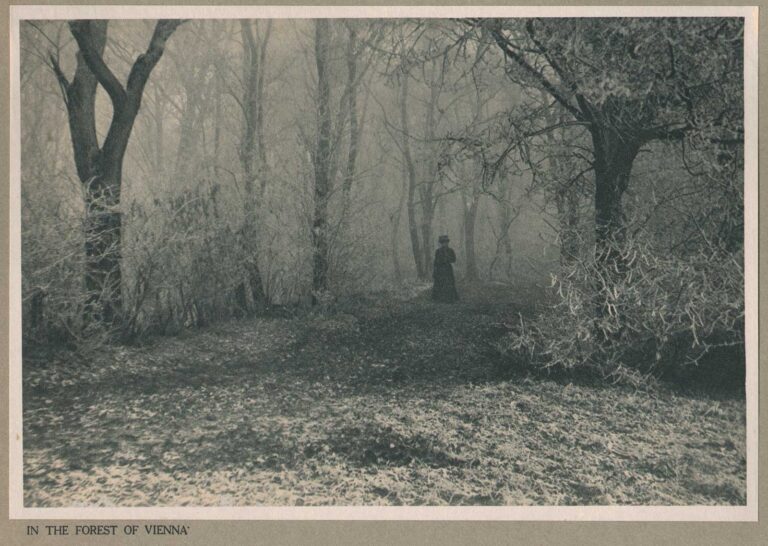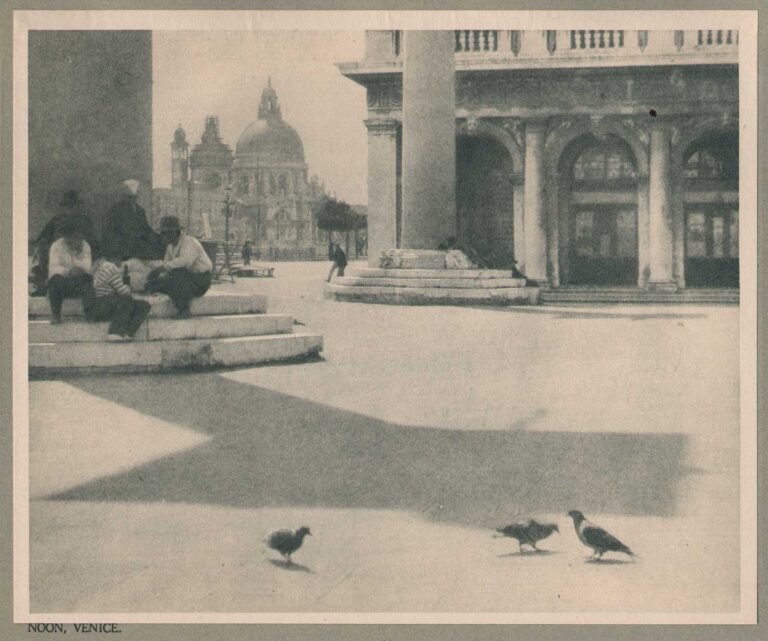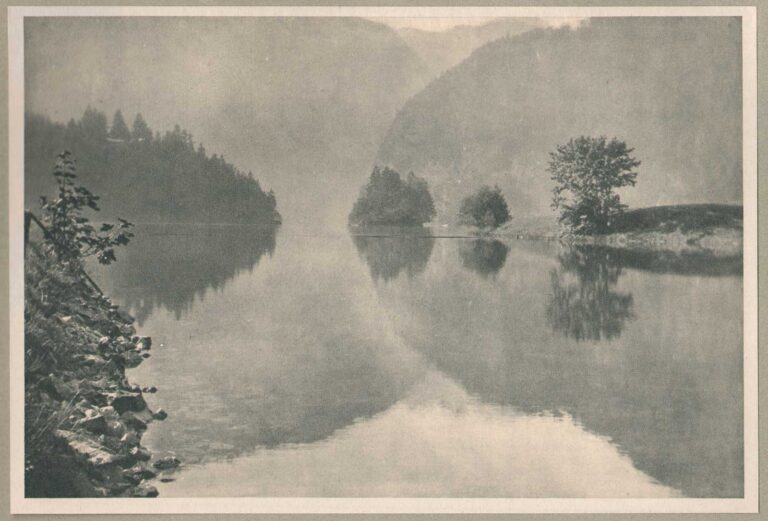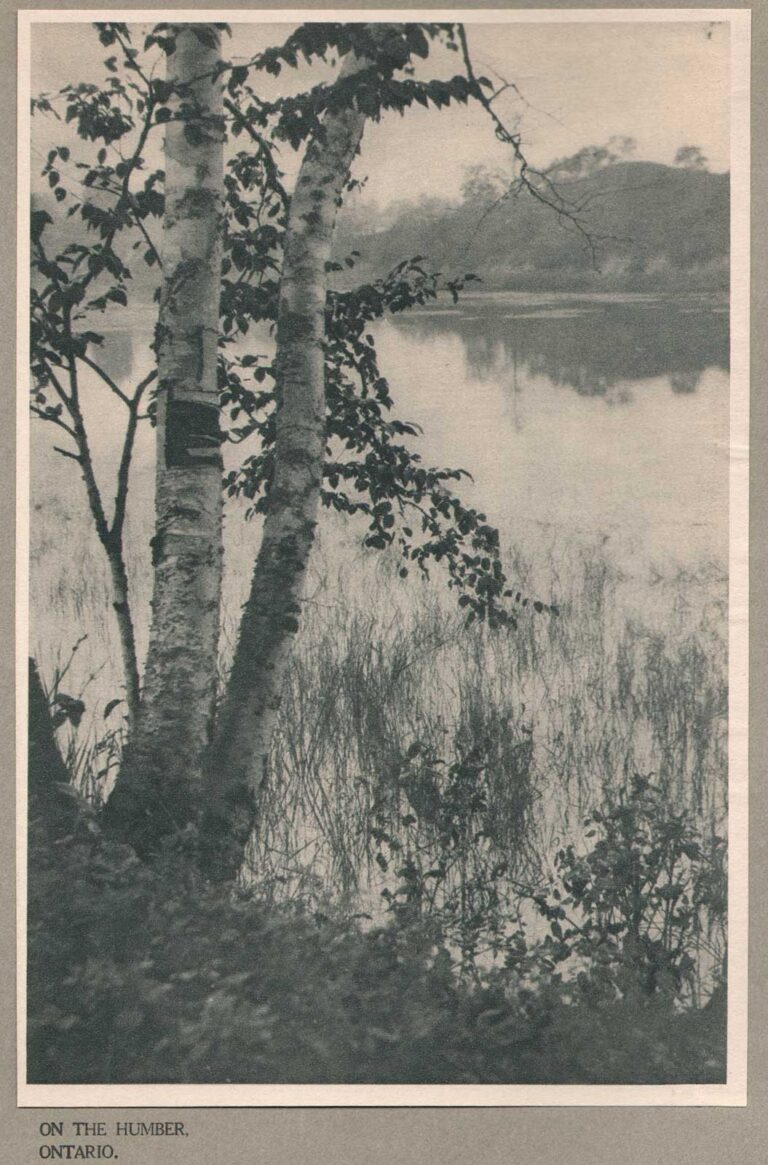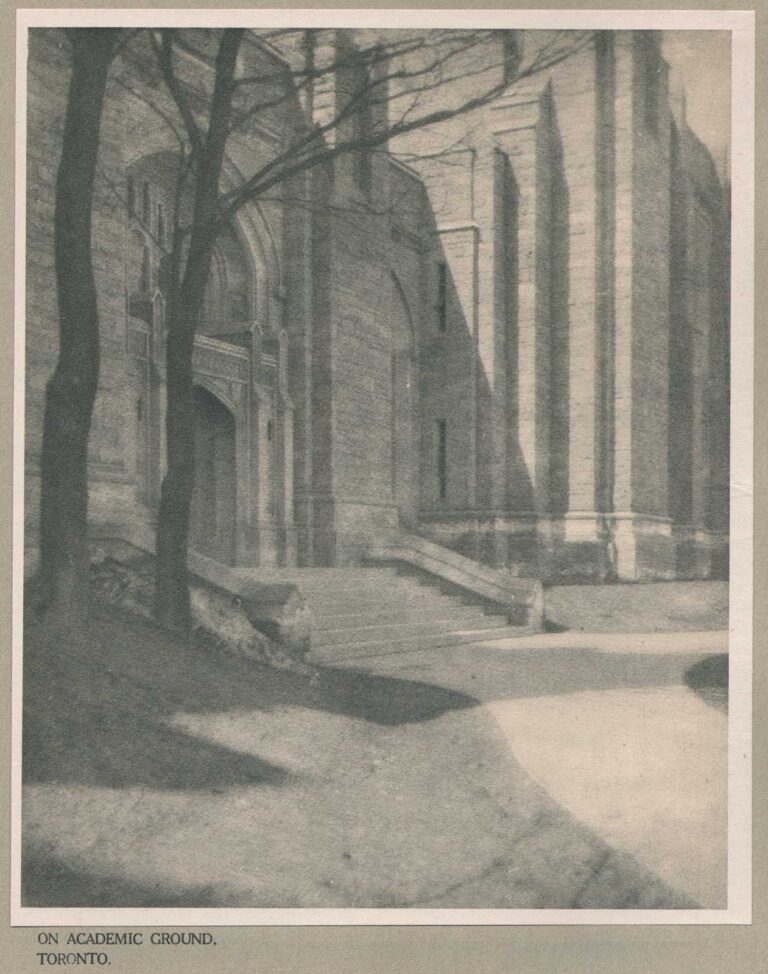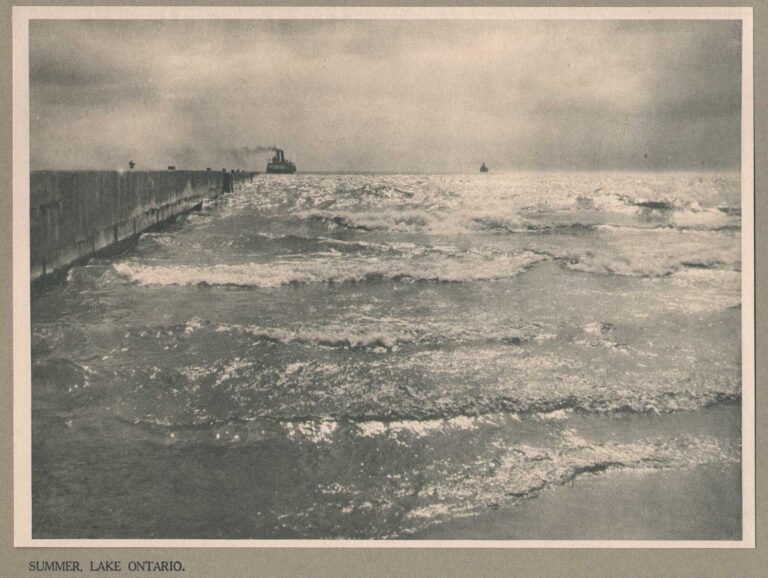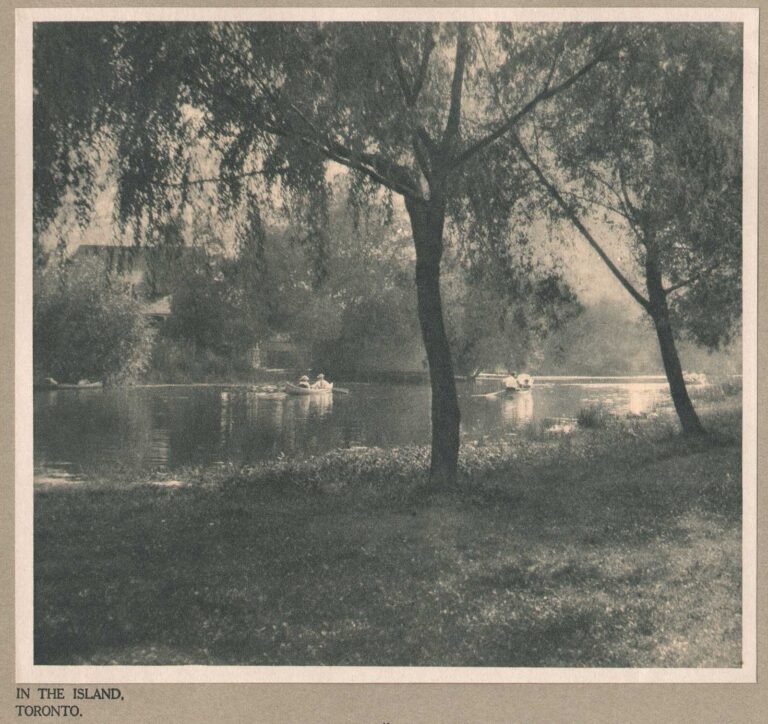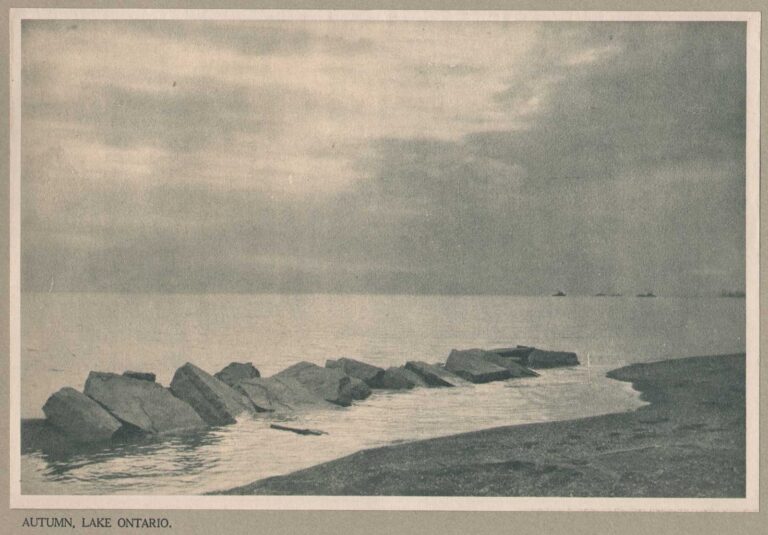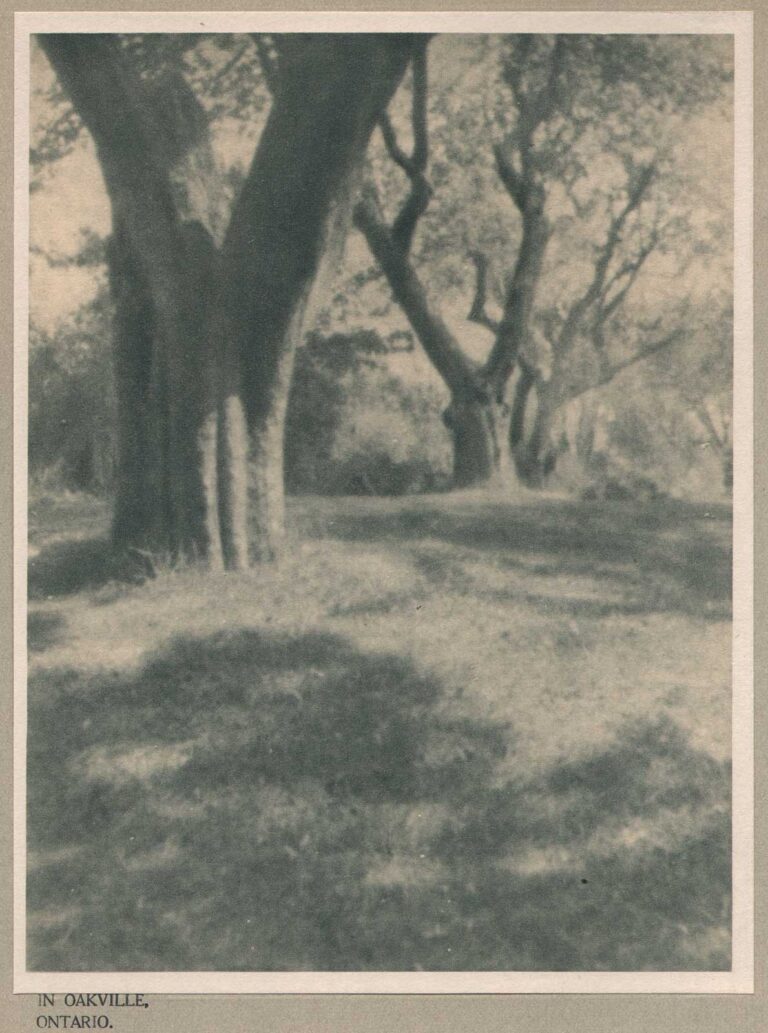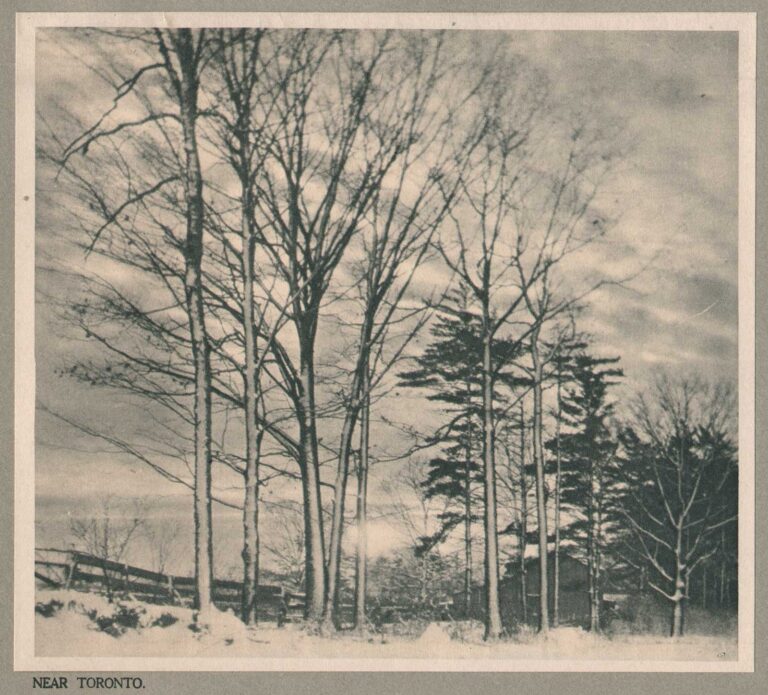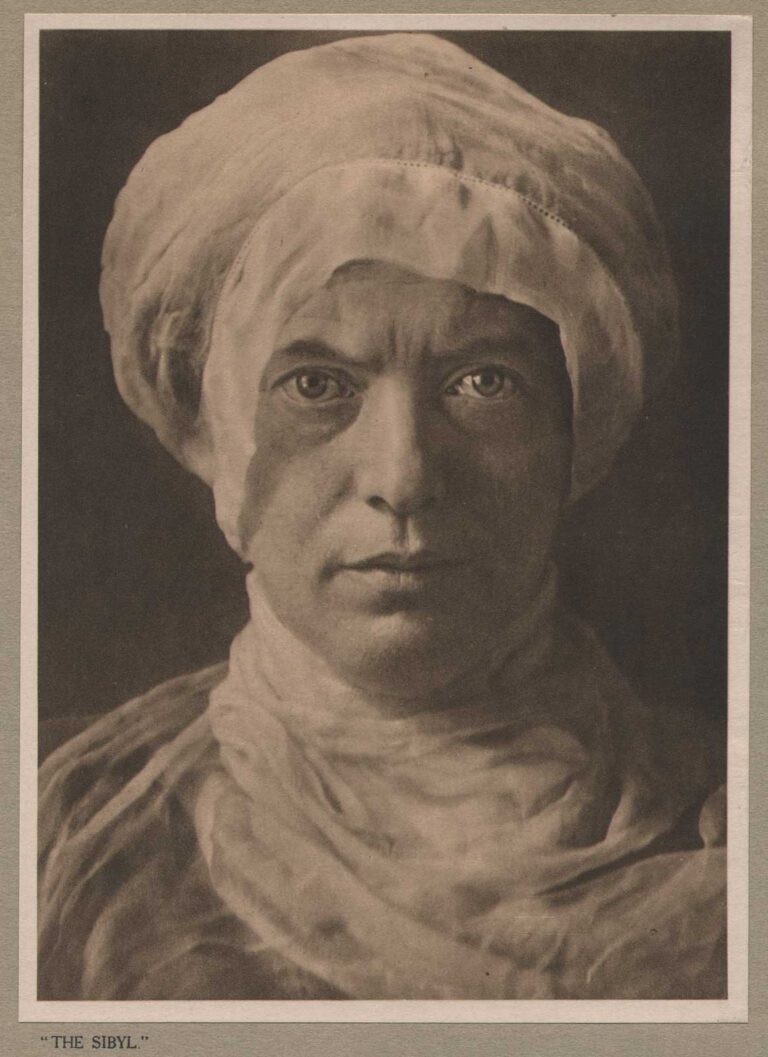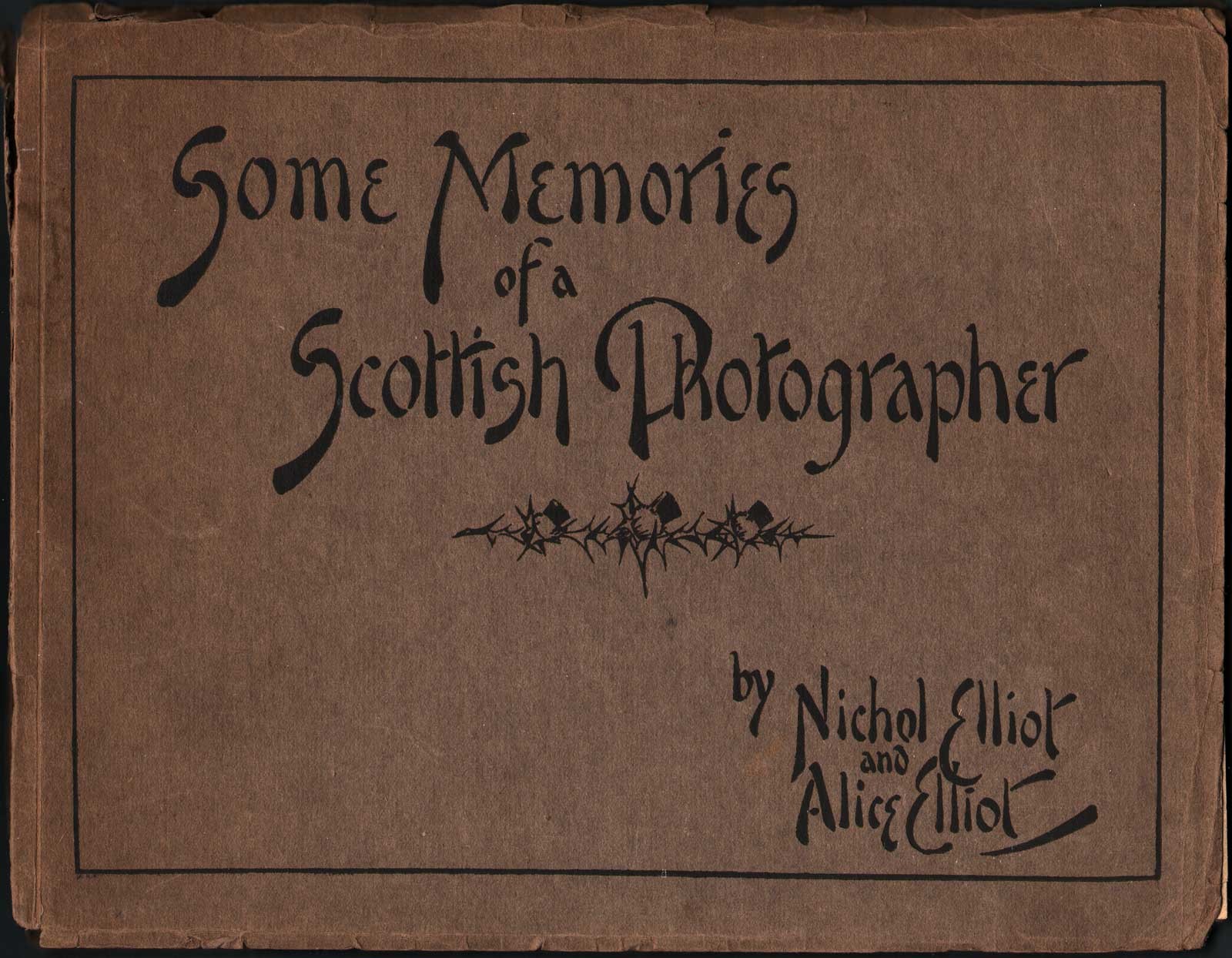
Some Memories of a Scottish Photographer
Some Memories of a Scottish Photographer
The horror that was World War 1 claimed millions of lives between 1914-1918. One of those belonged to a photographer, Nichol Elliot, a Scotsman by birth whose wife Alice Elliot in 1919 self-published this memorial volume. Accompanied by original poems penned by her, the work showcases 23 pictorialist photographs taken in Great Britain, Germany, Italy, Austria and Canada from exhibition prints and printed in fine mezzogravure dating from ca. 1900-1914, a loving tribute by his wife and lasting memorial to all those who perished.
Provenance: Album acquired by this archive in January, 2008 from Florida dealer.
The Great War: Answering the Call
During World War I, Scottish photographer Nichol Elliot, (1873-1917) who came from the Scottish Borders town of Coldstream, rose to become a Second Lieutenant in the 1st Battalion Northamptonshire Regiment. While attached to the 2nd Trench mortar Battery, he died in battle in Belgium on July 10, 1917. As recounted later in this post from a 1919 biography, he was killed along
“with 24 brother officers and the greater part of the regiment in the desperate and heroic resistance the 1st Northamptons and the King’s Royal Rifles—cut off among the sand-dunes near Nieuport—offered to the overwhelming forces and artillery of the enemy on July 8th, 9th, and 10th, 1917.”
The online blog First World War-On this day notes July 10th was a Tuesday, with 851 deaths recorded. On the Western Front, it reports that:
“After intense bombardment German gain ground to the east of the mouth of the Yser (river) (Nieuport) and cut off and destroy parts of two British battalions, taking over 1,000 prisoners.” It also states that the “British counter-attack drives Germans from advanced positions gained near Lombardsyde.”
On the Eleventh Hour of the Eleventh Day of the Eleventh Month : an Armistice: November 11, 1918
With the centennial of the Armistice for the Great War upon us, originally signed 60 kilometers north of Paris inside a railway carriage parked in the Forest of Compiègne on November 11, 1918, we honor the memory of all who fell, paying particular tribute to Nichol Elliot with this online exhibition. His passion and dedication to photography, not to mention his older years and separation from Scotland-an ocean away-did not prevent him from answering the call and becoming one of those who gave the ultimate sacrifice on behalf of Great Britain during World War 1. (1.)
1. Wikipedia notes the conflict was one of the deadliest in human history, stating the “total number of military and civilian casualties” for this war is estimated to be about 40 million people. (15 to 19 million deaths and about 23 million wounded military personnel)
Biography: Nichol Elliot 1873-1917
From the illustrated monthly, The Border Magazine, published in Scotland, the issue of August, 1919 features a lengthy biography of Nichol Elliot as well as a separate review including background on Alice Elliot’s memorial volume:
The Late Mr. Nichol Elliot
THE retired assistant editor of one of the best known British magazines recently sent us a most exquisite album of photogravures accompanied by the pleasing information that they were from photos by a Borderer. We at once decided that we would do honour to this true son of the Border by giving a sketch of his career, and by drawing the attention of our readers to the book of beauty which has been published as a memorial of a noble life. A friend has kindly supplied us with the following biographical notes, which we trust will interest our readers and prove an inspiration to many young Borderers:
—Nichol Elliot, a Coldstream man, a true son of the Tweed, was early attracted to photography by the graphic articles on that subject in the “Boy’s Own Paper.” Keenly observant, and a careful student of such things as combine mechanics and beauty, he made—having been trained in joinery—a fine camera for his own use; and oddly enough the first picture he took won him a prize.
He decided on taking up photography as a profession, and determined to become a complete expert in all its branches. This involved leaving his Border home and the country he so warmly loved, and to which he only returned afterwards for brief holidays. In those earlier years he served his full time as Volunteer in the K.O.S.B. Very musical, with a good baritone voice, he was long a member of the choir in his home town, and also a teacher in the Sunday School—offices which he continued in London and elsewhere, adding to them arduous drill-work for the Boys’ Brigade.
Through several years in London he followed his profession in one or other of the leading colour reproduction firms, whilst studying diligently at the Poly-technic. Among the photographers of all nations he thus met, he learnt that the chief place in Europe for final study of the scientific and artistic basis and application of photography was the famous “Academy of Graphic Arts” in Vienna. Determined to master all theoretical, as well as practical, knowledge of his subject, he made it possible, by his own thrift and resolution, to go to Vienna, and enter there as student of the Academy, where he later obtained his certificate, having so thoroughly acquired that expert scientific knowledge he desired that, though a foreigner, he obtained a good position with the leading colour reproduction firm there, and aided in the making of some of the famous “Medici” prints. His firm also sent him as expert representative to well-known picture collectors, or to foreign galleries as far as Russia.
In Vienna he married Miss Alice Maddock, a Worcestershire lady, whose profession was that of coach in English literature to the women students at the University of that city. Two years later Mr Elliot decided to carry out a long cherished project by seeking fresh experiences in Canada, where he obtained an excellent post in Toronto, being recognised there as a first-class photographic expert.
On the “amateur” or “pictorialist” side of photography, as artistic pleasure in hours of leisure, Nichol Elliot expended all his gifts of perception, feeling and love of the beautiful, and was always swift to seize the characteristic beauty of any place, and to find beauty in exceptional places. The varying tones of light and shade, the charm of trees, of water, of clouds and atmosphere, of architecture—all these were his delight; and he was also very happy in some of the pictorial work called “home portraiture.”
He exhibited from time to time in various salons, and received very pleasing recognition on this beautiful art side of photography. In Canada, as a member of the Royal Photographic Society and of the Toronto Camera Club, he exhibited very largely, and took several medals for landscape, marine, or home portraiture, a series of his pictures at the Canadian Exhibition of 1913 calling forth particular admiration.
In 1913 he was also adjudged the first prize winner in the “Inter-Colonial Competition” arranged by “Photography,” his subject being “The Sofa Corner” or “Lady in Black.”
On the outbreak of war he at once joined one of the local regiments, but, presently perceiving what the war was likely to mean, he decided in 1915 to give up his post and the evening Lectureship on photographic chemistry, etc., just offered to him at the new Toronto Technical College, and to go over for service in the Old Country. The serious illness of his wife delayed him a while, but on her recovery the two crossed to England, and Nichol Elliot, taking many years off his age, for he was well over 40, entered the Artists’ Rifles O.T.C., volunteered on the first opportunity for France, as members of this Corps have the privilege of doing, and remained in France or Belgium from early in 1916 until his death in July, 1917, with only one single 10 days’ leave, in May of the latter year.
He was in the trenches during part of the terrible winter of 1916-17; obtained his commission early in the latter year in the 1st Northamptons, the famous old “48th”; and was killed with 24 brother officers and the greater part of the regiment in the desperate and heroic resistance the 1st Northamptons and the King’s Royal Rifles—cut off among the sand-dunes near Nieuport—offered to the overwhelming forces and artillery of the enemy on July 8th, 9th, and 10th, 1917.
Nichol Elliot left the same impression on all who came to know him well, an impression of the finest type of Scot—a man of principle, and of genial nature, of deeply artistic temperament, high aims, and scientific thoroughness; a lover of nature, of books, of his fellow- men—with the Scot’s love of far adventuring, and the Scot’s love of home. The same kindliness, humour, and fine simplicity which he took with him from home, he retained to the last moment of his life. He did what it was only his duty to do, and what thousands of others did—gave up all his prospects at a mature age to risk perils, woundings, and death for the cause he regarded as not only his country’s, but God’s. Death came to him in an awful and heroic form, yet he remains to us one of those thousands of gallant sons of Scotland in whom she may indeed take a noble pride.
Mr Elliot’s father, who passed away while this sketch was being planned, was a thoroughly patriotic Scot, and all his sons were in khaki, one being still an A.S.C. officer out in Mesopotamia. To the mother, who was thus been doubly bereaved, and to her family, we extend our sincere sympathy. The father was a noted violin maker in Coldstream in his later years, and the instruments which left his hands were noted for their beautiful mellow tone. Just before his death his wife was able to show him the fine photogravure memorial to his hero son, and as the shadows closed around him he had strength enough left to express his pleasure regarding the work.
Mrs Elliot, for whom we have the deepest sympathy, is a poet of no mean order, as is proved by the poems which accompany her husband’s pictures in the photogravure album above referred to. Before her marriage she issued through Elkin Matthews two small volumes of verse, and now she has published “Some Memories of a Scottish Photographer,” as a tribute to the brave departed. We deal with this fine publication more fully in our “Border Bookcase” column, to which we refer our readers.
-Editor. (John Menzies & Co., Edinburgh & Glasgow: pp. 115-17)
Review & Background: Some Memories of a Scottish Photographer
The Border Magazine: August, 1919
THE BORDER BOOKCASE.
In our leading article for this month we have dealt at some length with the life of the late Mr Nichol Elliot, a Border artist, photographer, and lecturer. His wife, left with a large number of his fine pictorial exhibition photographs in her possession, desired, as a memorial to her husband, to reproduce some of them in good photogravure and book form with brief accompanying poems. A selection was carefully made with an eye to showing an outline of his travels—student journeys included—and also his skill in the four branches of pictorial photography, portraiture, landscape, marine, and architecture. His own portrait by S. Langfier is also given.
This beautiful book, which is sold at 7/6—practically cost price—should find its way into many Border homes at hame and awa’. It can be ordered through any bookseller, but we give a few of the special agents who keep it in stock :—R. Scott & Sons, Coldstream; J. Millar. Hide Hill, Berwick; Andrew Elliot, Princes Street, Edinburgh; R. Sach, Victoria Street, London, S.W. 1; Baker & Son, The Mall, Clifton, Bristol.
The wide scope of Mr Elliot’s work will be seen in the following list of pictures, which falls naturally into four divisions :—Home Portraiture—” Threading the Needle” (portrait of the artist’s mother); ” The Violin Maker” (portrait of his father); “Home” exhibited as “Oor guidwife had puddin’s to mak’ “); “The Sibyl “. Pictorial Marine or Aquatic—” When Memories Flow” (On the Tweed); ” Dürnstein in Sunshine “; ” The Gloaming Hour “; ” The Wavelets on the Shore”; “A November Sunset”; “The Canadian Birch Tree.” Pictorial Architecture—”Old Cloister, Bavaria”; “The Shadowed Doorway”; “The Duomo, Milan”; “The Column in the Shadow “; ” Old Church, Bavaria.” Pictorial Landscape—” A Landscape in Lombardy “; “The Frost-Fog in the Woods” (in the Forest of Vienna); “The Wayside Trees” (in the Marchland towards Hungary); “An Idyll of Peace” (in the “Island,” Toronto); “An Old Wayside Orchard in May” (in Oakville, Ontario); “The Winter Grove at Sunset ” (near Toronto).
Printed by Vandyck’s, Limited, Bristol, every picture in the book, from the artist’s portrait to the last page, is a thing of beauty, and well worthy of preservation. Were anything necessary to enhance the value of the work we would find it in the beautiful and touching verses which accompany the illustrations. These poems are from the facile pen of Mrs Elliot, to whose efforts we are indebted for this exquisite memorial to her husband’s work and worth. (ibid: p. 125)
Alice Elliot | Poet: 1867-1938
PhotoSeed is indebted to John “Humie” Elliot, whose great uncle was Nichol Elliot. John supplies us with the following insight:
Alice his wife was born Alice Maddock in 1867 and came from Worcestershire. They met and married in Vienna where she was employed as a coach in English Literature to the women students of the University in that city and Nichol was studying at the Academy of Graphic Arts. …Alice was a poet in her own right and some of her works were published before and after Nichol’s death. … Alice came from a religious background and my research shows that her great great grandfather was William Vincent, Dean of Westminster around the turn of the 17th century, a high position in the Church of England. Her mother was christened in Westminster Abbey.
In 1910, Alice Elliot married Nichol in a small family ceremony at the British Consulate in Vienna, Austria on June 2nd. Following his dream of greener pastures two years later in 1912, she joined Nichol in Canada sometime after June, when he arrived in Quebec City aboard the steamer Saturnia with the couple’s ultimate destination being Toronto.
In 1915, with the onset of war, she moved back to England along with Nichol. After his death, she continued to compose poetry, much of it reflecting her strong Christian faith, as she had always done: the literary second daughter of grammar school head master, the Rev. William Herbert Maddock, M.A. (1840-1891) and her mother, Mary Wall Maddock. (1839 -1912)
Alice Elliot died in 1938 and is buried at Brockley and Ladywell Cemetery in the London Borough of Lewisham.
Published work: Alice Elliot
1905: An Autumn Romance, and Other Poems, (Vigo cabinet series., no. 26) by Alice Maddock: London: Elkin Matthews
1908: The Knocking at the Door, and Other Poems: (Vigo cabinet series., no. 47) by Alice Maddock. Publisher: Elkin Matthews
1913: Young England : a special reader for the practice of idiomatic English by Alice Elliot and Josefine Weissel: Wien, Leipzig Tempsky; Freytag
1919: Some Memories of a Scottish Photographer: From Photographs by the late Nichol Elliot, with Poems by Alice Elliot: Bristol: Published by Mrs. Elliot
1923: A Little Medley Book of Fantasy, Fable and Verse: by Alice Elliot: Bristol: Partridge and Love
1924: The Sparrow Hath Found Her an House [Poems]: by Alice Elliot: Bristol: Partridge and Love
